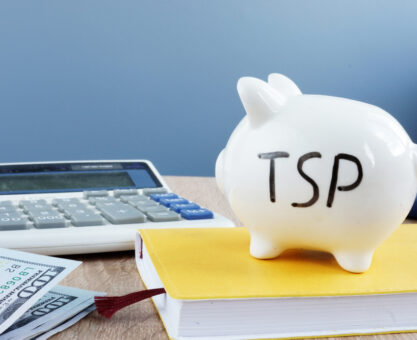If you’re contemplating rolling your Thrift Savings Plan (TSP) into an Individual Retirement Account (IRA), it’s important to weigh the advantages and disadvantages. Many former TSP participants move their funds into IRAs, so understanding the types of IRAs and their rules can be helpful.
Can You Contribute to Both a TSP and an IRA?
One common question is whether TSP participants can also contribute to an IRA. The answer is yes; TSP and IRA contributions are not mutually exclusive. Many are unaware of this, which can limit their retirement savings options.
Differences Between TSP and IRA Plans
While both TSPs and IRAs are tax-advantaged, they differ in structure. The TSP is an employer-sponsored plan, while an IRA is individually managed. Some rules overlap, such as the definition of a Roth-qualified withdrawal, while others differ, like the age at which early withdrawal penalties apply.
Earned Income Requirement for IRA Contributions
To contribute to an IRA, you must have earned income. There’s also a provision for spousal contributions if one spouse isn’t employed. Contributions are capped, with 2024 limits set at $7,000 per year, or $8,000 for those aged 50 or older.
“Traditional IRAs offer potential tax-deductible contributions and tax-deferred growth.”
Features of a Traditional IRA
Traditional IRAs offer potential tax-deductible contributions and tax-deferred growth. Withdrawals are taxed as income if contributions were made with pre-tax dollars; only earnings are taxed if they weren’t. A 10% penalty applies to early withdrawals, with specific rules depending on whether contributions were deductible.
Penalty for Missing Required Minimum Distributions
Traditional IRAs, like the TSP, require minimum distributions starting at age 73 (or 75 for those reaching that age in 2033 and later). Failing to meet this can result in a 25% tax penalty.
Rolling Over to a Roth IRA
You also have the option of rolling your TSP into a Roth IRA. This can be done by moving funds from a Roth TSP directly to a Roth IRA or by converting traditional TSP funds to a Roth IRA, though taxes will apply to converted amounts.
Advantages of a Roth IRA
Roth IRAs differ from traditional IRAs, especially in tax treatment and withdrawal rules. Contributions are made with post-tax dollars, and qualified withdrawals are tax-free if the account has been open for five years and the owner is at least 59½. Roth IRAs also have no minimum distribution requirements, though income restrictions apply for contributions.
Making the Right Choice for Your Rollover
Rolling over your TSP funds into an IRA requires careful consideration of the pros and cons based on your financial goals. Contact an FRC® trained advisor to determine what works best for your retirement planning.



























